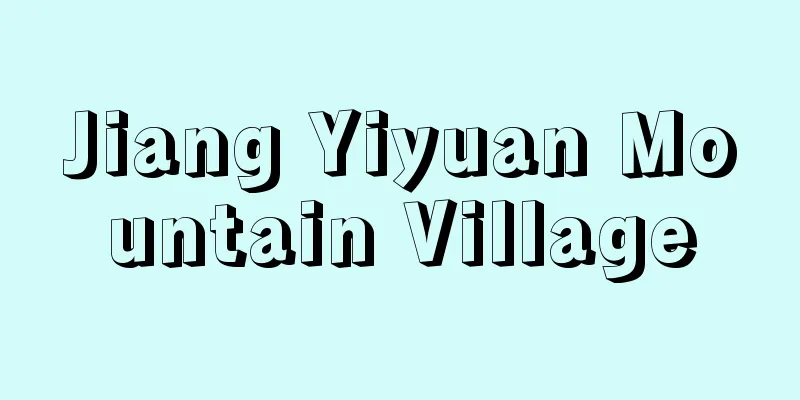Oka Castle Ruins

|
<br /> Castle ruins in Taketa, Taketa City, Oita Prefecture. Also known as Gagyu Castle and Bungo Takeda Castle. Sandwiched between the Inaba River to the north and the Shirataki River to the south, it was built on Tenjinyama, a sheer cliff 325m above sea level, and the castle grounds stretch 2500m from east to west and 360m from north to south. Arranged from east to east are the Honmaru, Ninomaru, Sannomaru, and Nishinomaru, with the Otemon Gate on the west side and the Shimobaru Gate on the east, and high stone walls built on the north side of Ninomaru and Sannomaru. The Nishinomaru was home to a palace and the residences of senior vassals, and a three-story turret was built in the southern corner of the Honmaru. In the "Horeki Gojo Shinkeizu" (True View of the Horeki Castle) from the Horeki era ( 1751-1764 ), the turret is depicted as a multi-tiered pagoda with flower-shaped windows and balustrades. Due to fires and destruction under the castle abolition law, only the stone walls remain, but the remains of the turret and main gate are clearly visible, and due to its large size, it was designated as a national historic site in 1936 (Showa 11). Later, the areas around the Inaba River, the remains of the domain school Yugakukan, the remains of Shichirigura storehouse, and the remains of samurai residences were also designated. It is unclear when the castle was first built, but it is said that the Shiga clan, a branch of the Otomo clan, renovated the Ogata clan's castle during the Kenmu era (1334-1338) and named it Oka Castle. During the Tensho era (1573-93), Shiga Chikayoshi repelled an attack by the Shimazu clan of Satsuma and received a letter of commendation from Toyotomi Hideyoshi. Later, when the Otomo clan was abolished, the Shiga clan left the castle, and in 1594 (Bunroku 3), Nakagawa Hideshige took over, and the Nakagawa clan continued to rule the castle until the Meiji Restoration. Nakagawa Hideshige carried out large-scale renovations, and the Gosankai Yagura turret in the main citadel was also built at this time. Taki Rentaro, known for his song "Kojo no Tsuki," spent his childhood in Taketa, and it is said that he got the idea for the song from the ruins of Oka Castle, and the area has been developed into Oka Castle Park. Take the community bus from JR Toyohashi Main Line Bungotaketa Station, get off at "Oka Castle Entrance," and it is about a 10-minute walk. Source: Kodansha National Historic Site Guide Information |
|
大分県竹田(たけた)市竹田にある城跡。別名、臥牛(がぎゅう)城、豊後(ぶんご)竹田城。北を稲葉川、南を白滝川に挟まれ、断崖絶壁が切り立ったような標高325mの天神山に築かれ、城域は東西2500m、南北360mに及ぶ。東から本丸・二の丸・三の丸・西の丸を配し、西側には大手門、東側に下原(しもばる)門を設け、二の丸・三の丸の北側には高石垣が築かれている。西の丸には御殿や重臣の屋敷などが置かれ、本丸南隅には御三階櫓(やぐら)が造られ、宝暦年間(1751~64年)の『宝暦御城真景図』では櫓は花頭窓(かとうまど)や高欄をつけた層塔形に描かれている。火災や廃城令による破却で、現在は石垣だけしか残っていないが、櫓や大手門などの跡がよくわかり、規模も大きいところから、1936年(昭和11)に国の史跡に指定された。その後、稲葉川周辺や藩校由学館跡、七里蔵跡、武家屋敷跡などの範囲が追加指定された。城の創建時期は定かではないが、建武年間(1334~38年)に大友氏一族の志賀氏が緒方氏の城を修築し、岡城と名づけたという。天正年間(1573~93年)には志賀親次(ちかよし)が薩摩の島津氏の来攻を撃退し、豊臣秀吉から感状を受けた。その後、大友氏の改易とともに志賀氏が城を去り、1594年(文禄3)に中川秀成(ひでしげ)が入封し、明治維新にいたるまで中川氏の支配が続くことになる。中川秀成は大規模な改修を行い、本丸の御三階櫓もこのときにできた。「荒城の月」で知られる滝廉太郎は幼少期を竹田で過ごし、岡城跡でその曲想を得たといわれており、一帯は岡城公園として整備されている。JR豊肥本線豊後竹田駅からコミュニティバス「岡城入口」下車、徒歩約10分。 出典 講談社国指定史跡ガイドについて 情報 |
<<: With head and tail - with head and tail
Recommend
Air Circuit Breaker
A type of circuit breaker that blows compressed ai...
New Year's Day - Good luck
January 1st. The first day of the first three day...
Pardon - Onsha
The extinction of all or part of the state's ...
Ikake - Ikake
...Distributed from Hokkaido to the Philippines. ...
Vladimirescu, Tudor
Born: 1780. Wallachia, Gorge Died June 7, 1821. Le...
fallout
...When these radiations are absorbed by living o...
Oppression - Danatsu
[noun] ① To trample underfoot. To suppress. To cru...
Acetylation - Acetyl (English spelling)
A type of acylation, generally referring to a rea...
Kawakami Bizan
Novelist. Born in Osaka. Real name Akira. Dropped...
Melilite (English spelling)
Igneous rocks poor in silicon dioxide. A solid sol...
Guajira Peninsula - Guajira Peninsula
…An indigenous people of the Guajira Peninsula, f...
Bunko
He was one of the Five Hegemons of the Spring and...
Islamic Sansai
...As a result, the shapes and glaze tones were n...
Golden Bat
…At that time, a kamishibai storyteller who was d...
Seongjeongwon - Shoseiin
During the Joseon Dynasty, Korea, this was an offi...









